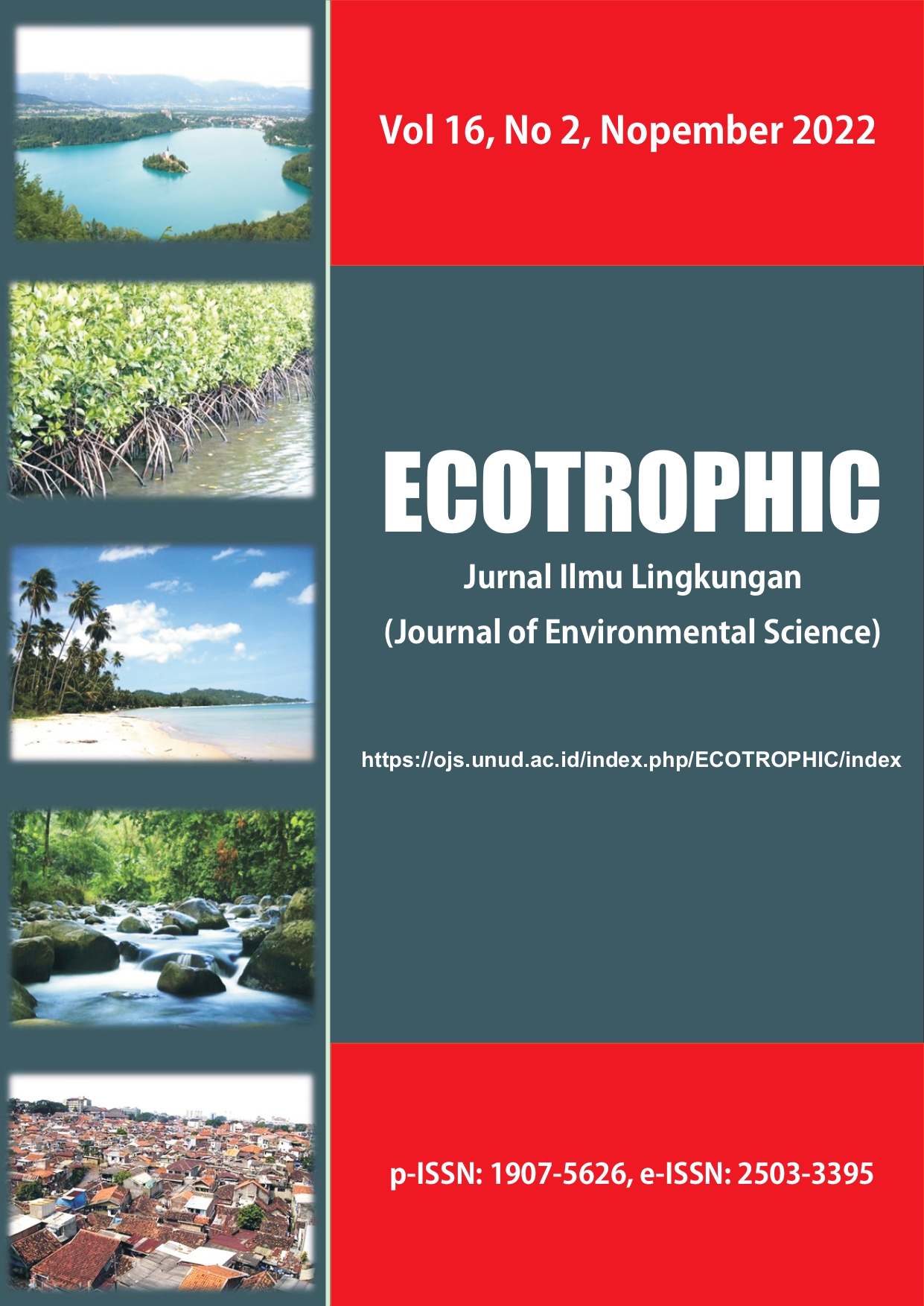KOMPOSISI JENIS DAN KONDISI MANGROVE DI TELUK GILIMANUK, TAMAN NASIONAL BALI BARAT
Abstract
Mangrove ecosystems have an important role, both for biota and humans. The level of density and mangrove cover is one illustration to determine the level of damage to mangroves. This study aims to determine the species composition and the level of mangrove damage based on the density and percentage of canopy cover of mangroves in Gilimanuk Bay. This research was conducted in February 2021. The determination of the sampling point was carried out using the purposive sampling method. Mangrove data retrieval was performed using a plot 10x10 m2 with a total number of plots were 31 plots. The results showed that there were 11 types of mangroves from 7 different families in Gilimanuk Bay. The most common type of mangrove found was Ceriops tagal (45,84 %) and the least was Xylocarpus granatum (0,13 %). Mangrove density in Gilimanuk Bay is 2390,32 ind/ha, and canopy cover is 83,84%, which shows that the condition of mangroves in Gilimanuk Bay is included in the good category (very dense).
Keywords: Mangrove; Gilimanuk Bay; Density; Canopy coverage
Downloads

This work is licensed under a Creative Commons Attribution 4.0 International License.


